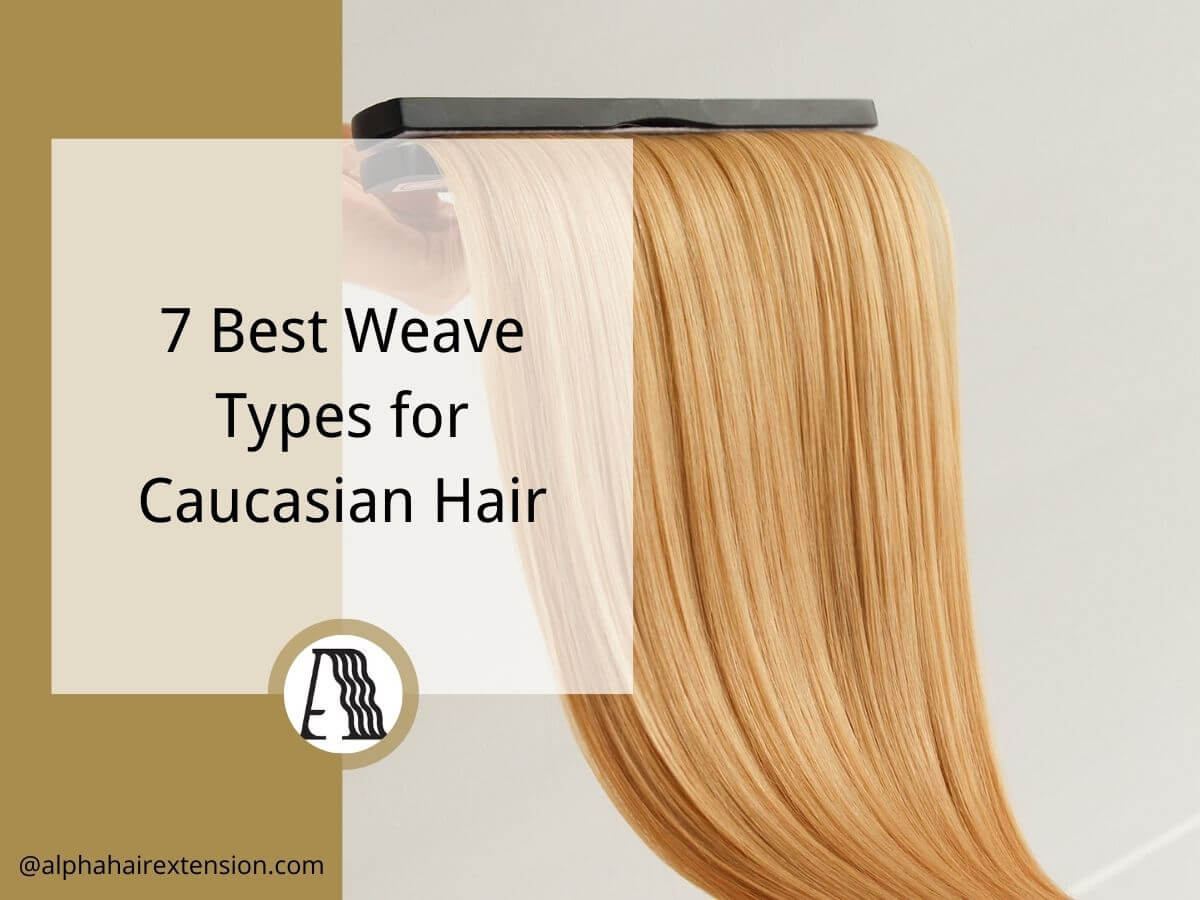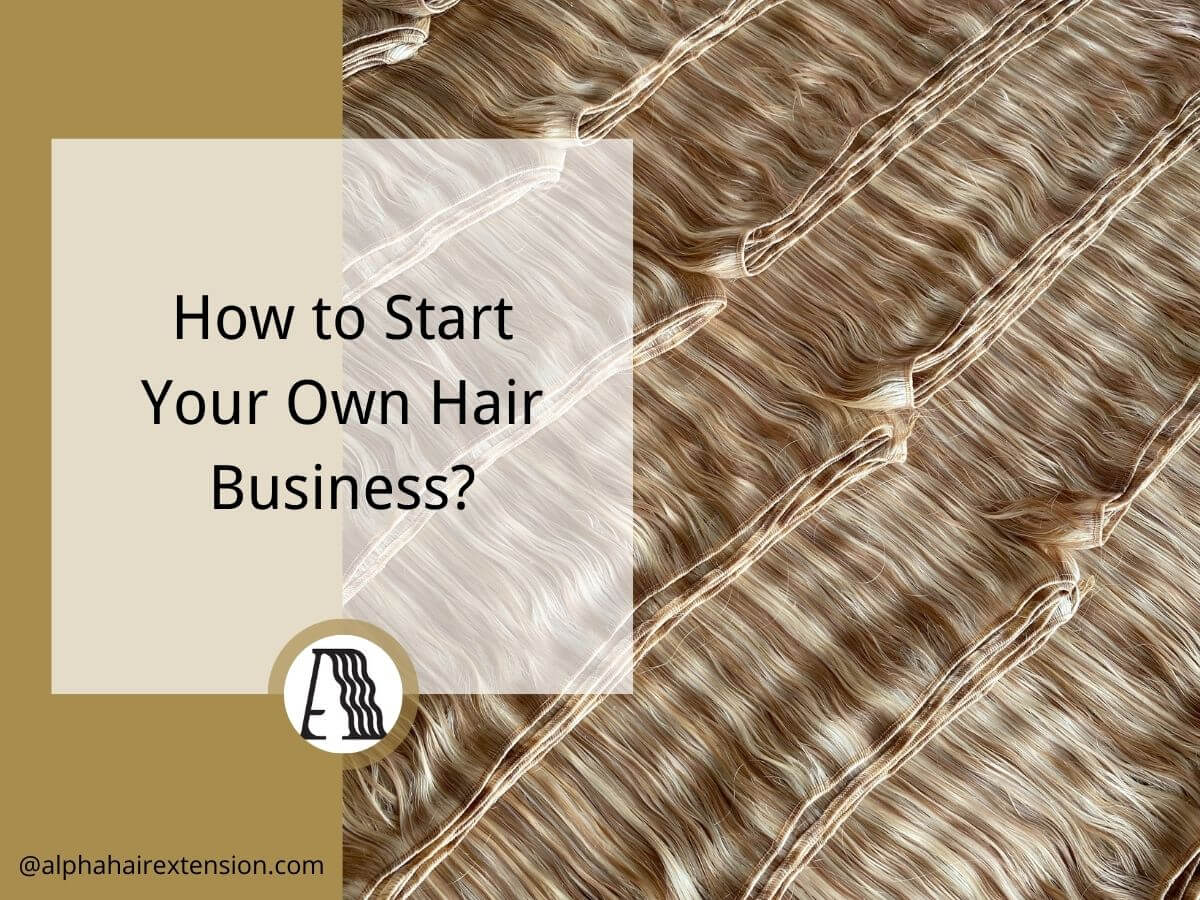I used to think hair extensions were all the same. But the first time I opened a shipment and saw the amount of plastic waste, it made me pause. The packaging, the chemicals, and the lack of transparency from suppliers—it didn’t feel right.
The beauty industry is shifting. More businesses want ethical and eco-friendly options, but finding the right products can be overwhelming. It’s not just about claims of being “green”—it’s about real impact.
That’s why I spent months researching and testing different hair extensions. This guide is based on real experience, supplier insights, and market trends.
You’ll learn about sustainable materials, ethical sourcing, and how to choose the best products for your business. By the end, you’ll have a clear understanding of what works and what doesn’t.
Customers are asking for better choices. If you want to stay ahead, now is the time to act.
So let’s get started!
1. Ethical & Sustainable Sourcing of Hair
I used to believe that as long as the hair was high quality, sourcing didn’t matter. But the first time I asked a supplier where their hair came from, I didn’t get a clear answer. That’s when I realized how little transparency there was in this industry. Many businesses don’t know if the hair they sell is collected ethically or if workers are treated fairly. I knew I had to dig deeper.
Traceability in Hair Sourcing
One of the biggest challenges in the hair extension business is knowing where the hair comes from. Many suppliers provide little to no documentation, making it difficult to verify ethical sourcing. Here’s how to ensure traceability:
- Work with suppliers who provide sourcing reports – Ask for details on where the hair is collected, how it is processed, and who is involved in the supply chain.
- Request certifications – Some organizations offer ethical sourcing certifications, ensuring that the hair is collected responsibly.
- Avoid suppliers with vague sourcing claims – If a supplier cannot explain where their hair comes from, it’s a red flag.
Alternatives to Human Hair
If sourcing ethical human hair is a challenge, consider these alternatives:
- Plant-based fibers – Some synthetic extensions are made from biodegradable plant-based materials, reducing environmental impact.
- Recycled synthetic fibers – High-quality, eco-friendly synthetic hair is now available, offering durability without relying on human hair.
- Reusable hair extensions – Encouraging customers to reuse and maintain their extensions reduces waste and demand for new hair.
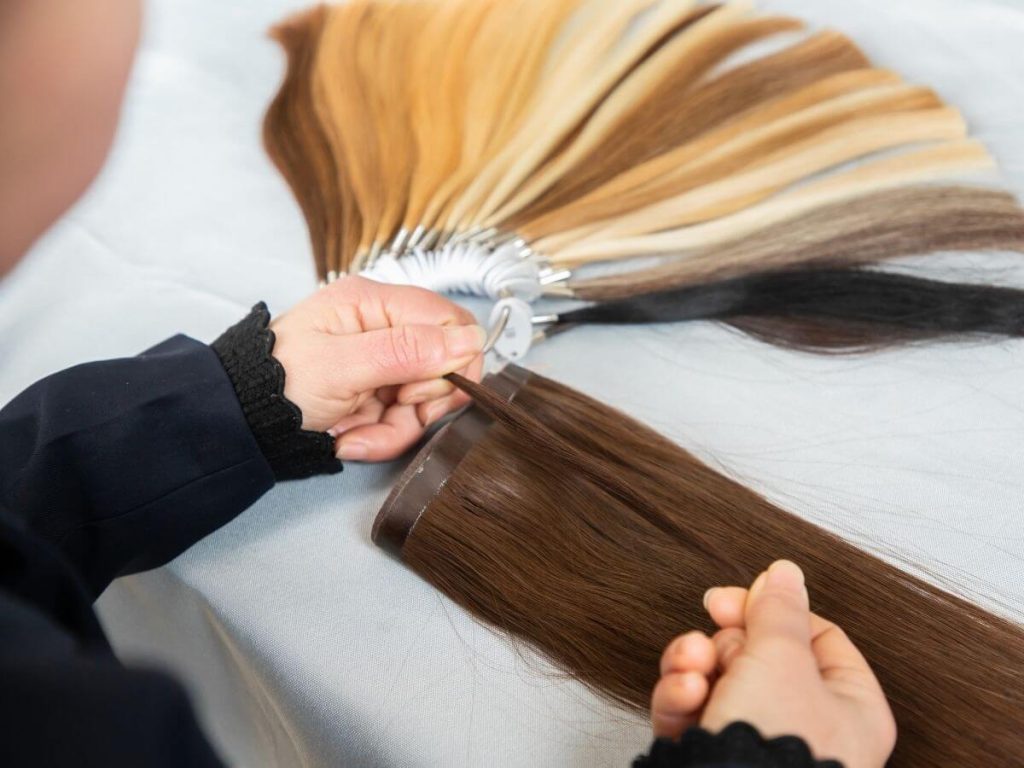
2. Eco-Friendly Production Processes
When exploring sustainable hair extensions, sourcing may seem like the primary concern. However, the processing methods are just as critical. Traditional techniques often involve excessive water consumption, harsh chemicals, and energy-intensive machinery, which can harm both the environment and the health of workers.
Even if a product is ethically sourced, irresponsible processing raises questions about its true sustainability.
Minimizing Water and Energy Use
Manufacturing hair extensions requires a significant amount of water and energy, especially during the washing, dyeing, and treatment processes. Reducing consumption is key to making production more sustainable.
- Closed-loop water systems – Some factories now recycle and reuse water, reducing overall consumption and wastewater discharge.
- Energy-efficient equipment – Newer machines consume less power and operate more efficiently, cutting down on emissions and costs.
- Solar and wind energy – Some manufacturers have started transitioning to renewable energy sources to power their operations.
By working with manufacturers who implement these practices, businesses can reduce their environmental footprint without sacrificing product quality.
Cleaner Manufacturing Technologies
Traditional hair processing involves chemical-heavy treatments that can be harmful to both workers and the environment. Switching to safer, more sustainable technologies makes a significant difference.
- Steam sterilization instead of chemical disinfection – This reduces exposure to harmful substances while maintaining hygiene and safety.
- Eco-friendly dyeing techniques – Natural dyes or water-based color treatments minimize chemical runoff.
- Less invasive texturizing methods – Some manufacturers use heat-based methods instead of chemical relaxers to create curls and waves.
Choosing cleaner technologies not only makes hair extensions more sustainable but also improves the health and safety conditions for workers.
Reducing Chemical Dependency
Many hair extension products are treated with silicones, synthetic coatings, and strong dyes to enhance their appearance. However, these treatments often contain toxic substances that pollute water sources and harm workers. Reducing chemical use helps create a more sustainable industry.
- Using biodegradable treatments – Natural oils and plant-based coatings can replace synthetic chemicals.
- Limiting artificial coloring – Opting for minimal or natural hair color treatments reduces the need for excessive chemical processing.
- Eliminating formaldehyde-based straightening treatments – Formaldehyde is harmful to both workers and customers; safer alternatives should be prioritized.
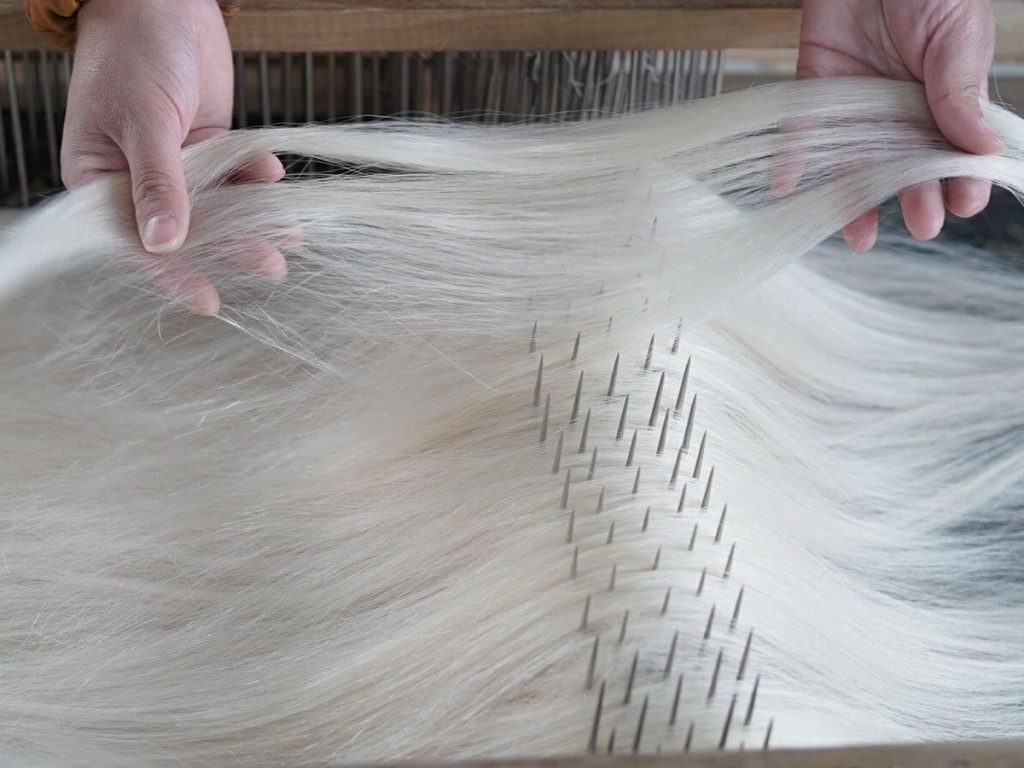
3. Water Conservation & Wastewater Management
When exploring sustainable hair extensions, focused on sourcing and materials. But one conversation with a supplier changed my perspective. They mentioned how much water was used in processing—washing, dyeing, and chemical treatments. The numbers were shocking. Water isn’t just a minor part of production; it’s one of the most heavily consumed resources in the industry. Worse, wastewater filled with chemicals is often released without proper treatment.
If businesses want to be truly sustainable, they must consider how much water is being used—and how it’s being disposed of.
Water-Saving Technologies in Manufacturing
Hair extension processing requires large amounts of water for cleaning and treating raw hair. Reducing water usage can lower costs and environmental impact. Some effective solutions include:
- Closed-loop water recycling systems – These systems treat and reuse water instead of continuously consuming fresh supplies.
- Low-water washing techniques – Some manufacturers now use advanced cleaning methods that require less water while maintaining hygiene.
- Water-efficient dyeing processes – Traditional dyeing is water-intensive, but modern techniques use water-based or dry dyeing methods to reduce waste.
Responsible Wastewater Treatment
What happens to the wastewater after processing? In many cases, untreated chemical runoff ends up in local water supplies, harming ecosystems and communities. Sustainable businesses must ensure their manufacturers follow responsible wastewater management practices.
- Filtration and purification systems – These remove toxic substances before releasing water back into the environment.
- Biodegradable chemical treatments – Using natural, water-safe treatments prevents pollution.
- Regulatory compliance – Working with manufacturers that meet environmental standards ensures wastewater is treated properly.
Ignoring wastewater management can have serious consequences, not just for the environment but for business reputation as well.
Eco-Friendly Dyeing and Processing Methods
Hair dyeing is one of the most water-intensive steps in production. Many traditional dyes contain harsh chemicals that require heavy rinsing, leading to excess wastewater. Sustainable alternatives include:
- Natural and plant-based dyes – These require less water and don’t produce harmful chemical waste.
- Water-reduced dyeing techniques – Some manufacturers use foam-based or digital dyeing methods that cut water use significantly.
- Air-drying vs. water-intensive processing – Allowing hair to dry naturally instead of heat-intensive steaming or boiling reduces water waste.
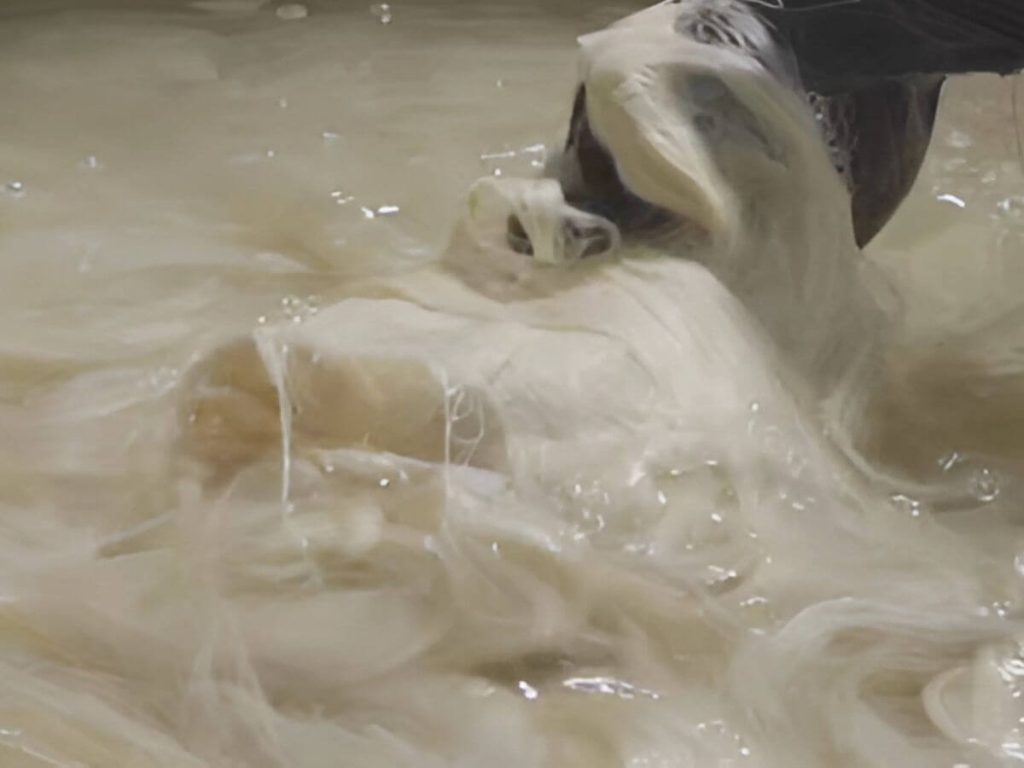
4. Sustainable Packaging & Shipping Solutions
Sustainability doesn’t stop at sourcing and production. Packaging and shipping play a huge role in a company’s environmental footprint. Businesses that switch to eco-friendly alternatives can reduce waste, cut costs, and meet growing consumer demand for greener options.
Biodegradable & Recyclable Packaging
Traditional hair extension packaging often includes plastic boxes, synthetic padding, and excessive wrapping. Sustainable packaging alternatives can significantly reduce waste without compromising product protection. Some options include:
- Recyclable cardboard and paper packaging – Sturdy, protective, and easy to recycle.
- Biodegradable materials – Some packaging is made from plant-based plastics that break down naturally.
- Minimalist packaging – Reducing unnecessary layers and using simple, eco-friendly wrapping materials.
Switching to sustainable packaging not only reduces environmental impact but also attracts eco-conscious customers and business partners.
Low-Waste Shipping Methods
Shipping hair extensions efficiently helps reduce the carbon footprint of deliveries. Businesses can make a difference by:
- Optimizing packaging size – Smaller, lightweight packaging reduces shipping emissions and costs.
- Partnering with green logistics providers – Some shipping companies use electric vehicles or carbon-offset programs.
- Offering bulk shipping options – Encouraging customers to place larger, less frequent orders minimizes transportation impact.
Shipping sustainability isn’t just about reducing emissions—it also lowers costs and improves efficiency.
Supplier and Distribution Partnerships
Choosing the right suppliers and logistics partners is key to sustainable packaging and shipping. Businesses should look for:
- Manufacturers that use eco-friendly materials – Ensuring packaging is recyclable or biodegradable from the start.
- Distributors with sustainable practices – Working with suppliers that minimize plastic use and streamline shipping.
- Third-party certifications – Verifying that suppliers meet environmental standards, such as FSC-certified packaging.
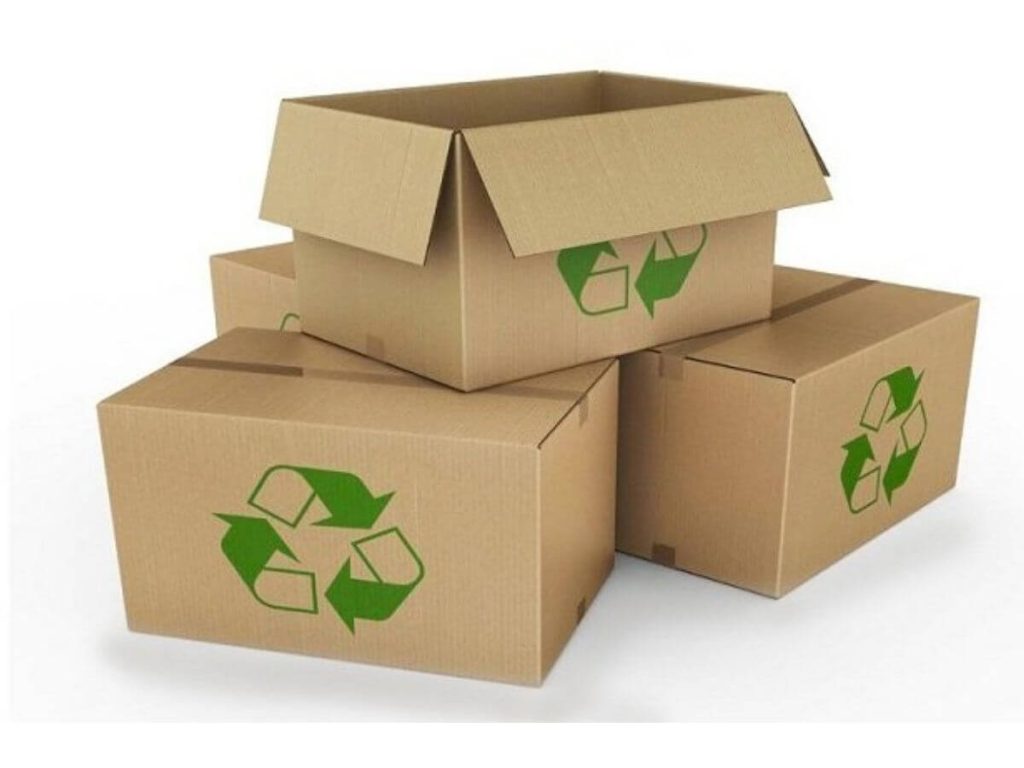
6. Reducing Carbon Footprints in Manufacturing
If businesses want to truly go green, they must consider the environmental impact of their entire supply chain—not just the final product.
Switching to Renewable Energy
Hair extension manufacturing involves multiple energy-intensive processes, from washing and dyeing to drying and packaging. One of the most effective ways to reduce carbon emissions is transitioning to cleaner energy sources. Many responsible manufacturers are making this shift by:
- Using solar, wind, or hydroelectric power – Factories powered by renewable energy significantly lower emissions.
- Installing energy-efficient machinery – Modern machines consume less power, reducing both costs and environmental impact.
- Optimizing production schedules – Running machines only when necessary prevents unnecessary energy waste.
Businesses sourcing from manufacturers who invest in renewable energy can offer truly sustainable hair extensions.
Optimizing Production Efficiency
Manufacturing inefficiencies often lead to excess energy use and higher emissions. By improving processes, factories can produce the same volume of hair extensions while using fewer resources. Some strategies include:
- Reducing production waste – Streamlining processes to minimize discarded materials and wasted energy.
- Using automated systems – Smart technology can adjust energy use based on real-time demand, cutting unnecessary consumption.
- Batch processing – Producing hair extensions in large, efficient batches instead of small, fragmented runs reduces energy waste.
Choosing suppliers that optimize efficiency helps businesses lower their environmental footprint without compromising output.
Sustainable Sourcing of Raw Materials
The materials used in production also affect carbon emissions. Responsible sourcing can significantly lower a company’s overall footprint. Sustainable manufacturers:
- Choose local suppliers – Reducing the distance raw materials travel cuts transportation-related emissions.
- Use energy-efficient processing methods – Techniques that require less heat, water, or chemicals help reduce overall impact.
- Work with eco-conscious hair donors and suppliers – Ensuring that raw materials are collected and processed with minimal waste.

7. Green Chemical & Material Substitutions
I used to assume that all hair extensions were treated the same way. But after looking into the production process, I realized how many chemicals were involved—synthetic dyes, harsh preservatives, and adhesives that don’t break down.
Many of these chemicals harm the environment, pollute water sources, and can even affect the health of workers and customers. Switching to safer, greener alternatives is essential for businesses that want to offer truly sustainable products.
Non-Toxic Hair Processing Alternatives
Traditional hair processing uses strong chemicals to clean, straighten, and color hair, but there are safer options available:
- Steam sterilization instead of chemical disinfectants – Using high-temperature steam to clean hair instead of chemical-based sterilizers.
- Water-based texturizing methods – Some manufacturers use heat and water instead of chemical relaxers to create curls and waves.
- Natural conditioning treatments – Replacing synthetic coatings like silicone with plant-based oils such as argan or coconut oil.
These alternatives make hair extensions safer for workers, customers, and the environment.
Organic and Plant-Based Hair Treatments
Many hair treatments contain artificial ingredients that cause buildup and require strong chemical removers. Green alternatives include:
- Plant-based dyes – Using henna, indigo, and other natural pigments instead of synthetic dyes.
- Biodegradable conditioning agents – Natural oils and extracts instead of petroleum-based silicones.
- Enzyme-based smoothing treatments – Using proteins and plant enzymes to soften hair instead of formaldehyde-based relaxers.
By choosing organic treatments, businesses can offer healthier products without compromising quality.
Eliminating Harmful Dyes & Adhesives
Many hair extensions are treated with synthetic dyes and adhesives that contain toxic ingredients. Sustainable businesses should look for:
- Low-impact or natural dyes – Water-based, non-toxic color treatments that reduce chemical runoff.
- Biodegradable adhesives – Replacing synthetic glues with plant-based or water-soluble alternatives.
- Formaldehyde-free treatments – Many straightening and preservation processes use formaldehyde, which is toxic to workers and customers.
Conclusion
When I first looked into green alternatives, I wasn’t sure where to start. But step by step, I learned that small changes make a big difference. You can do the same.
Your choices matter. Will you be part of the change?
What’s one step you can take today to make your hair business more sustainable? Let’s talk.
Contact us today!
Explore More of Our Resources
There’s more to explore! Check out our additional product selections to find exactly what you’re looking for:
Still haven’t found what you’re looking for? Don’t hesitate to contact us. We’re available around the clock to assist you.


